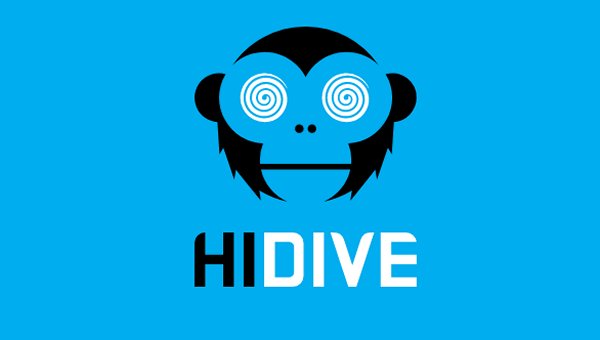HIDIVE’s Nana Is The Emotional Coming-Of-Age Gutpunch You Didn’t Know You Needed
Nana on HIDIVE delves into the millennial mindset unlike any other anime.

Have you ever spent an entire day worrying over some benign thing that you said? Have you ever gotten exactly what you wanted and still felt incomplete? Have you ever fundamentally questioned who you are? Have you ever been in your twenties?
Anime often gets generalized as a genre that showcases exaggerated characters with unbelievable powers who engage in fantastical flights of fancy. But sometimes an anime will stare right into your soul and help you realize things about yourself that you could never previously articulate. Nana is one such anime. It’s arguably the best series for 20-somethings and millennials to watch–an anime that hits harder and probes deeper than some of this generation’s most staggering animated efforts.
There’s an overwhelming amount of anime and manga to explore, but Ai Yazawa’s prolific Nana has become even more of an obscure and lost relic. The Nana manga hit the shelves in 2000, but has been in and out of print for years and it has left its fans waiting in the wings with a hiatus that’s now over a decade long. Nana’s anime has been similarly difficult to track down, but HIDIVE has recently given it the boost that it deserves with weekly releases of all 47 dubbed episodes. Nana is now easier than ever to enjoy.
Two Girls Named Nana – The Endless Humanity In Nana’s Characters
Nana belongs to the “josei” genre, which can get dismissed as melodrama for a maturing female audience. This is certainly true for many josei series, but Nana is essential viewing for any person of any age. It’s a universal story about humanity and acceptance that transcends its genre’s shortcomings. Nana focuses on two girls, both named Nana, who reach comparable periods of transition, albeit with contrasting goals.
Nana Komatu–nicknamed Hachi–follows her heart and views romance as the ultimate form of affirmation. Nana Oosaki is driven to become a famous rockstar and establish her own identity rather than be in someone else’s shadow. These goals may seem somewhat contrary, but they boil down to both Nanas needing to learn who they truly are before they can find fulfillment elsewhere. However, knowing what they want in life doesn’t necessarily mean that their journeys are easy.
Nana’s characters are accomplished, but they struggle to see the value in themselves–their true selves–until someone else gives it to them. Yet even then they’re still slaves to someone else’s standards. Both Nanas cultivate public images for themselves that they hide behind like suits of armor. It’s a slippery slope, but in time, the Nanas find their independence and understand the artificial nature of these crafted personas.
One Is The Friendliest Number – The Power Of The Self
Nana poignantly tells its characters that “being alone and being lonely are two different things.” The anime carefully examines how to become empowered, not frightened, by being alone. Simple, honest acts of understanding dwarf manufactured displays of love. The union between Nana Osaki and Ren Honjo is one of the sweetest relationships in Nana, but even it isn’t strong enough to overpower real obstacles and human fragility, like addiction. It’s not an anime where the power of love can fix everything or banish away evil. It’s just one tool to better understand the world. Nana makes it clear that this is beautiful, but not always going to be enough. Satisfaction needs to come from within first.
Scenes in Nana can be very hard to watch because of how true they ring. The insecurities, doubts, and ugly traits that the audience possesses are realistically reflected through Nana’s central characters. Nana doesn’t present anyone as some stock anime archetype, but it twists this paradigm even further. These aren’t perfect people and the ability to see their negative qualities exhibits a level of confidence and trust in the audience to not abandon them. Much like opening up to a friend or confessing a secret to a lover, Nana asks its audience to be patient and understanding, and it in turn reciprocates this respect. This makes some moments in Nana particularly raw and emotionally grueling, but they’re necessary.
As the audience accepts and understands Nana’s characters, it provides them with the skills to forgive themselves and understand that mistakes aren’t only acceptable, but they’re human and inevitable. Many anime want their audience to cheer, but Nana wants their viewers to ugly cry and then give themselves a bearhug. Ideally Nana Komatsu and Osaki will gain clarity, but if they don’t, the anime explains that that’s okay. Nana ricochets between affirming sweetness and uncomfortable melancholy, but it’s these extremes that keep it honest.
One of the strongest examples of this is when Nana Komatsu equates her own insecurities and her desire to make others happy with the classic fairy tale figure and Disney princess, Cinderella. Hachi ponders that if Cinderella’s glass slipper is such a perfect fit then it should have never fallen off in the first place and that it must have been an intentional act. She transforms an idealized love story into a reflection of her own inadequacies, which is what Nana asks the viewer to do at every moment, whether it’s with this anime, similar series, or the cultural touchstones that have been around them for all of their lives, like Cinderella.
Nana – Self-Improvement Through Anime
These difficult and messy decisions are a lot to endure, but it’s exactly why Nana is the perfect tool for millennials to learn and better themselves. It’s BoJack Horseman, but for a younger generation who haven’t reached such a place of complacency. Nana is an ode to human kindness that turns friendship and honesty into its superpowers and spectacles. There is no shortage of anime with believable, flawed characters that the audience is meant to empathize with, but Nana excels in this department because it has zero interest in stereotypes. Even the unfinished and open-ended nature of Nana’s conclusion–which is sometimes framed as a deterrent–feels appropriate. It’s indicative of life itself. People change and friendships can strengthen or dissolve without warning or finality. Life goes on.
Few anime are able to so accurately depict the transition into adulthood, warts and all, and genuinely inspire change in the audience with the questions that it forces them to consider. Nana is an immensely human experience that everyone benefits to observe and HIDIVE’s weekly releases accentuate its humble slice-of-life nature that can cut to the core. Nana is sometimes gutting, but it’s also a celebration of what it means to be human and the importance of finding and accepting yourself.
It’s just like what Nana Komatsu says: “Even though it’s painful sometimes, if you keep on living then good things can happen.” Nobody expects perfection. It’s enough to just keep trying.

